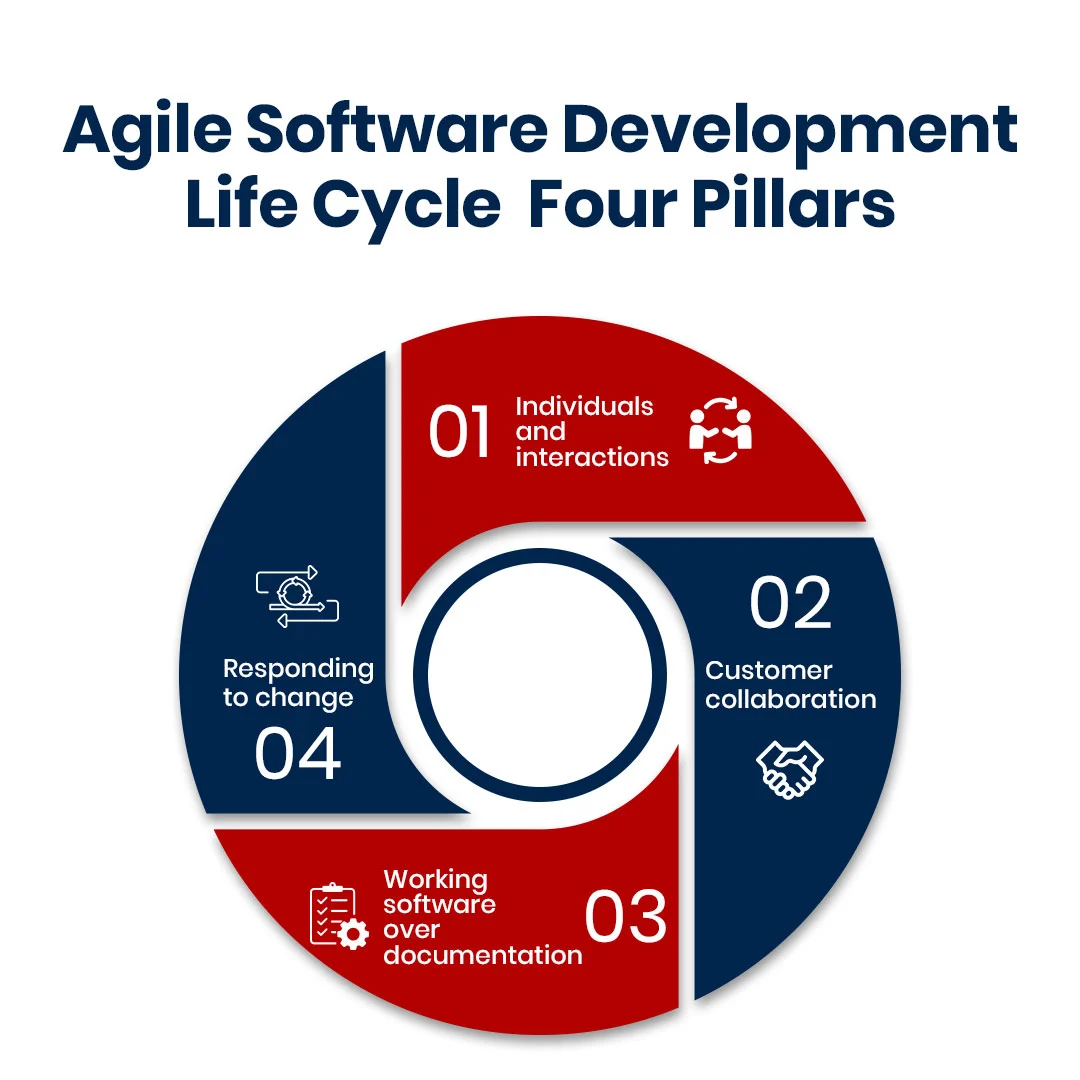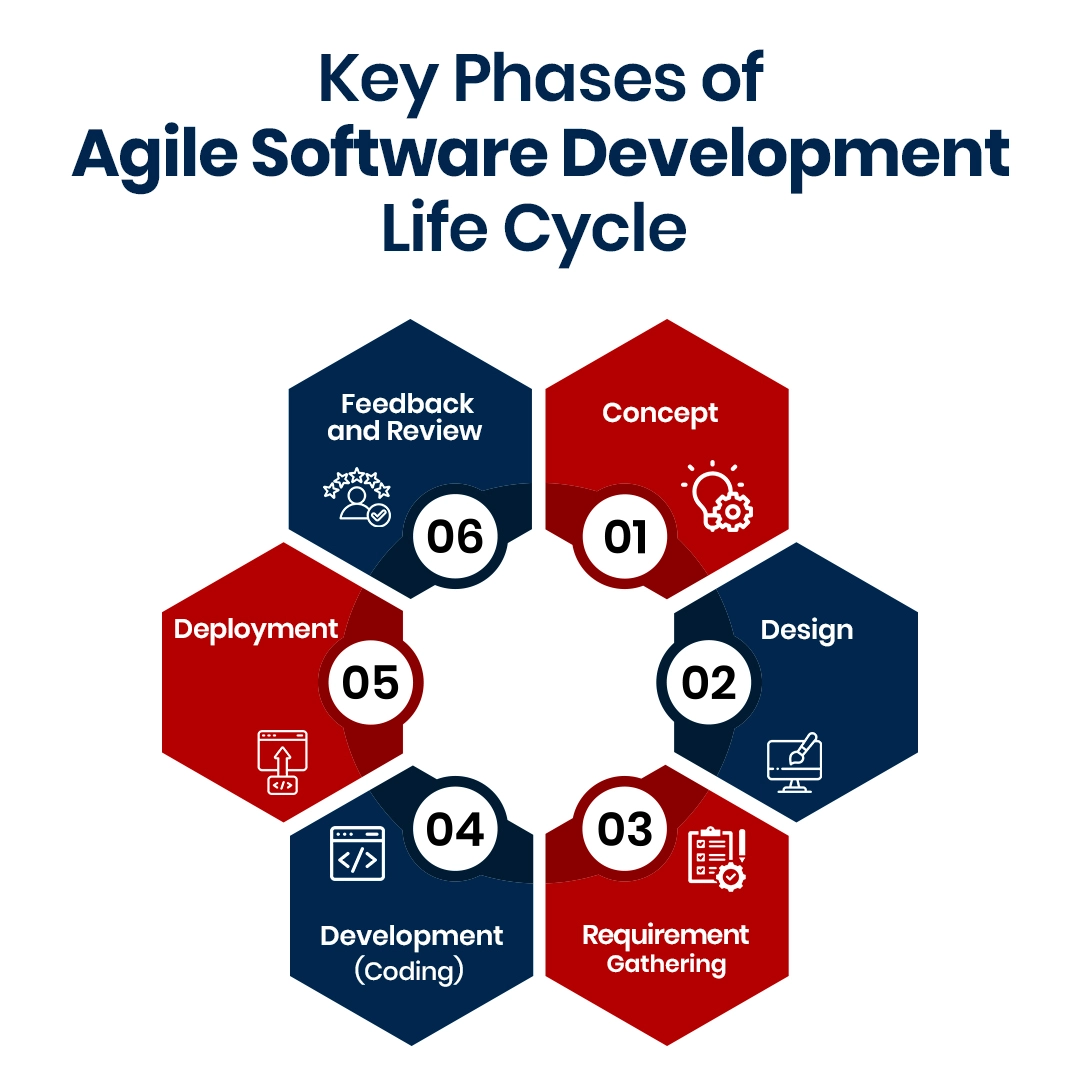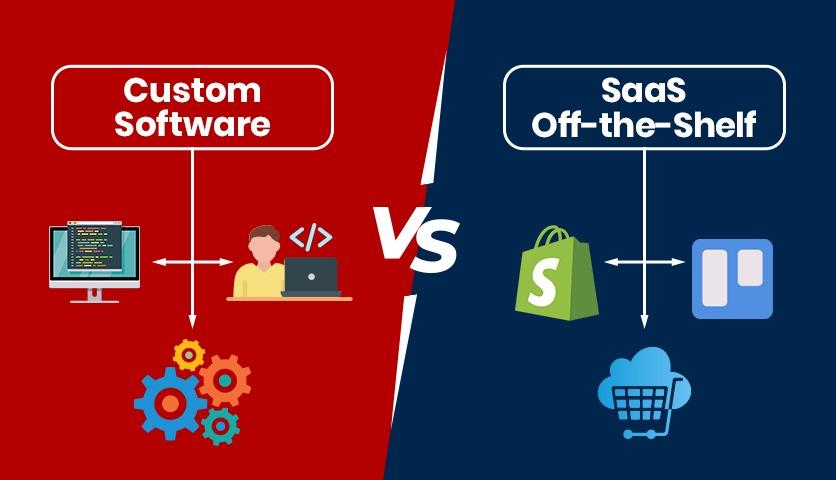Traditional software projects often struggle with issues like poor communication, rapidly changing client needs, and missed deadlines. These problems not only delay delivery but also lower customer satisfaction.
Software developers do the work of building these websites and apps. But choosing the best software development method can be confusing.
Today, we’ll share a software development method that tackles these issues: Agile Software Development Life Cycle.
Let’s understand this with an example:
Suppose you are building an online shopping or food delivery app for a client. You plan everything from coding to testing and then show the final product to the client.
He says, “I wanted an Instagram login and a search filter. Now what? Are you starting over?”
Yes – if you were using the old Waterfall Model.
But with the Agile Software Development Life Cycle, changes can be made quickly and smoothly even after final delivery.
Understanding the Agile Software Development Life Cycle
Agile Software Development Life Cycle means being fast and flexible – and it truly lives up to its name. But how?
Let’s understand.
Agile is a method of making software in which you can divide the project into small parts. After developing each part, you can immediately show it to the client and get feedback on it. The client may want to make some changes. With the help of the Agile Software Development Life Cycle, this work can be done easily.
But when you show the client that the login page and product page are ready, he gives his feedback. And if he doesn’t like something, it can be changed instantly.
Agile working is so successful now that big companies like Google, Microsoft, and Amazon are also adopting it.
Agile Manifesto Values and Their Real-World Impact
The agile software development life cycle mainly stands on four pillars, which are its core principles. These Agile pillars are as follows:

1. Individuals and interactions
- More important than technology is that people – developers, clients, and designers – talk to each other.
- Real outcomes (e.g., “Quicker decision-making and fewer delays”)
2. Working software over documentation
- Clients want results, not the process.
- Clients care more about results than lengthy documentation.
- Real outcomes (e.g., “Faster releases and better feedback”)
3. Customer collaboration
- The Agile Software Development Life Cycle provides the best facility for customer collaboration.
- The client stays connected with the project from the beginning to the end so that the result is just as they want.
- Real outcomes (e.g., “Higher customer satisfaction”)
4. Responding to change
- If the client’s requirements change, they can be immediately adopted.
- Real outcomes (e.g., “More adaptability and fewer reworks”)
How Agile Software Development Life Cycle Differs from Traditional Waterfall SDLC
Previously, the Waterfall model was used for software development. What is the Waterfall model? You can understand it step-by-step:
- Requirement
- Design
- Development
- Testing
- Delivery
If anything needs to be changed after the final submission, it is very difficult to change.
But in the Agile Software Development Life Cycle: Plan → Design → Develop → Test → Feedback → Repeat
You can make and show something every one or two weeks and then go to the next step. In this way, the client gets the opportunity to give feedback.
There is almost no scope for mistakes, and the result is always a “happy client.”
Key Phases of Agile Software Development Life Cycle
Let’s understand the phases of the Agile Software Development Life Cycle step-by-step:

- Concept – First of all, talk to the client and understand what they want and what the purpose of the project is.
- Requirement Gathering – According to the requirements, research is done into what features need to be added, what functionalities should be there, etc.
- Design – Now the basic structure of the app or software is created — like homepage, interface etc.
- Development (Coding) – In this step, actual coding starts, and new features are made in each sprint.
- Deployment – When all the features are ready, they are made live or sent to the client.
- Feedback and Review – The client sees the result and gives feedback on it.
Why Agile SDLC Is the Future of Software Projects
1. Fast delivery
The client doesn’t have to wait long; they can see the entire process.
2. Low risk
If a mistake happens, it can be fixed.
3. Client satisfaction
This is because the client remains involved from start to finish. The client gets exactly what they want.
4. Quality
Remains high. Due to testing and feedback after each sprint, the code remains clean and good.
Real-World Success Stories of Agile SDLC
Spotify
- Agile is the reason behind Spotify’s success.
- Spotify divided its team into groups called “squads.”
- Squads made independent decisions → Speed & innovation increased.
- Watch how Spotify used Agile to scale innovation
ING Bank Netherlands
- This bank converted its entire company to Agile.
- Productivity increased by 40%.
- Source: ING’s agile transformation – McKinsey
Salesforce
- Salesforce made its CRM software faster and better through Agile.
- Release a new version within a few weeks.
Challenges in Agile SDLC and How to Overcome Them
Common Challenges in Agile SDLC
- The team is afraid of change.
- People connected to the old system feel scared to adopt the new method.
- The client keeps requesting to add new things, which can lead to deviation.
- Lack of communication
Solution
- Training – It’s important to teach the team the Agile mindset.
- Clear roles – Everyone’s role should be fixed: who is the product owner, who is the developer, and who is the tester.
- Use tools – like Jira, Trello, which make tracking and giving updates easy.
How Autotroph Infotech Leverages Agile SDLC
Autotroph Infotech is a modern software company that implements Agile in a very practical and result-driven way.
What Autotroph Infotech does:
- Uses Scrum and Kanban frameworks.
- Daily standups.
- Review and retrospective after every sprint.
Benefits seen by clients through Agile SDLC adoption
- Clients get fast results.
- The work is transparent and without confusion.
- Each feature is tested, and quality remains high.
Also Read – Benefits of AI in Manufacturing – Boost Efficiency & Quality
Conclusion
The Agile Software Development Life Cycle is a method that prepares you to change over time. In today’s fast-changing market, speed and accuracy are crucial to meeting client demands.
In such cases, Agile methodology gives you speed, quality, flexibility, and – most importantly—the client’s smile.
Ready to build faster, smarter, and better? Explore Agile Software Development with Autotroph Infotech today.
FAQs
1. What is Agile SDLC?
Agile SDLC is a flexible approach to software development.
2. How is Agile different from waterfall?
Agile is an iterative model, while Waterfall is sequential and linear.
3. What are the benefits of Agile?
Adaptability, better collaboration, fast delivery, and high quality.
4. Which companies use Agile?
ING Bank, Salesforce, Google, Microsoft, and Spotify.


